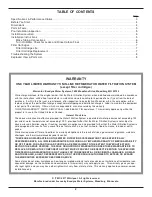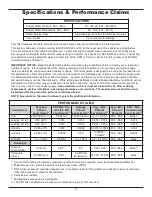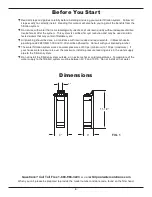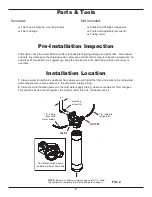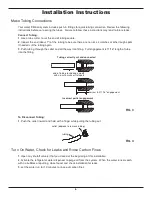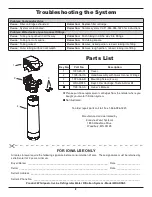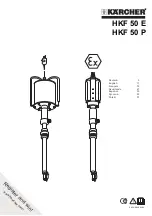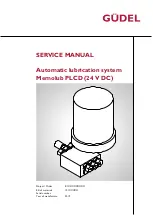
3
Specifications & Performance Claims
This filter improves the taste and odor and reduces many chemical contaminants in drinking water.
This system has been tested according to NSF/ANSI 42 and 53 for the reduction of the substances listed below.
The concentration of the indicated substances in water entering the system was reduced to a concentration less
than or equal to the permissible limit for water leaving the system, as specified in NSF/ANSI 42 and 53. The testing
was performed using spiked tap water at a flow rate of 0.5 GPM (1.9 L/min.), pH of 7.5 ±0.5, pressure of 60 PSIG,
and temperature of 68 ±5°F.
IMPORTANT NOTICE:
Read this performance data and compare the capabilities of this unit with your actual water
treatment needs. It is recommended that, before purchasing a water treatment unit, you have your water supply
tested to determine your actual water treatment needs. This filter system is designed to be used for the reduction of
the performance claims listed below. Do not use where water is microbiologically unsafe or of unknown quality, with-
out adequate disinfection before or after the system. Systems certified for cyst reduction may be used on disinfec-
ted water that may contain filterable cysts. While testing was performed under standard laboratory conditions, actual
performance of the system may vary based on local water conditions. Some or all of the contaminants reduced by
this unit may not be in your water supply.
See elsewhere in this manual for instructions on filter cartridge
replacement, system installation, operating procedures, and warranty. The maintenance instructions must
be followed for the product to perform as indicated below.
NOTE: See labels on the water treatment system for additional information.
SPECIFICATIONS
Supply Water Pressure Min. - Max.
30 - 100 psi (207 - 689 kPa)
Supply Water Temperature Min. - Max.
40 - 100 °F (4 - 38 °C)
Rated Service Flow
0.5 gallons per minute (1.89 liters per minute)
Inlet - Outlet
1/4" quick connect fittings
PERFORMANCE CLAIMS
Contaminant
Required
Influent
Level (mg/L)
k
NSF Max. Per -
missible Effl.
Level (mg/L)
k
Average
Influent
Level (mg/L)
k
Avg. / Max.
Effluent
Level (mg/L)
k
Avg. / Min.
Percent
Removal
EPA
j
Max.
Contaminant
Level (mg/L)
k
Cyst
≥50,000 #/mL
mn
99.95%
l
150,000 #/mL
m
<1 /<1 #/mL
m
99.9 / 99.9
None
o
Lead @ pH 6.5
0.15 ±10%
0.010
0.152
0.001 / 0.001
99.3 / 99.3
0.015
Lead @ pH 8.5
0.15 ±10%
0.010
0.150
0.001 / 0.001
99.3 / 99.3
0.015
Atrazine
0.009 ±10%
0.003
0.0092
0.0019 / 0.0022 87.3 / 76.8
0.003
Lindane
0.002 ±10%
0.0002
99.0
0.00002 /
0.00002
99.0 / 99.1
0.0002
Turbidity
11 ±1 NTU
0.5 NTU
11 ±1 NTU
0.2 / 0.4 NTU
98.5 / 96.4
None
Substance
Chlorine
Taste & Odor
2.0 ±10%
50%
l
2.0
0.05 / 0.08
97.5 / 96.2
None
o
Particulate
Class I
10,000 mg/L
85%
9,000,000
particles/mL 14,000 / 14,000 99.9 / 99.8
None
j
Environmental Protection Agency maximum contaminant level as required under the Safe Drinking Water Act.
k
Milligrams per liter, which is equivalent to parts per million (PPM).
l
NSF minimum percent reduction requirement. Acceptance level for this substance is based on percent reduction,
rather than maximum effluent concentration.
m
Particles per milliliter.
n
Microspheres was used as a surrogate.
o
The EPA has not determined a maximum contaminant level for this chemical.


